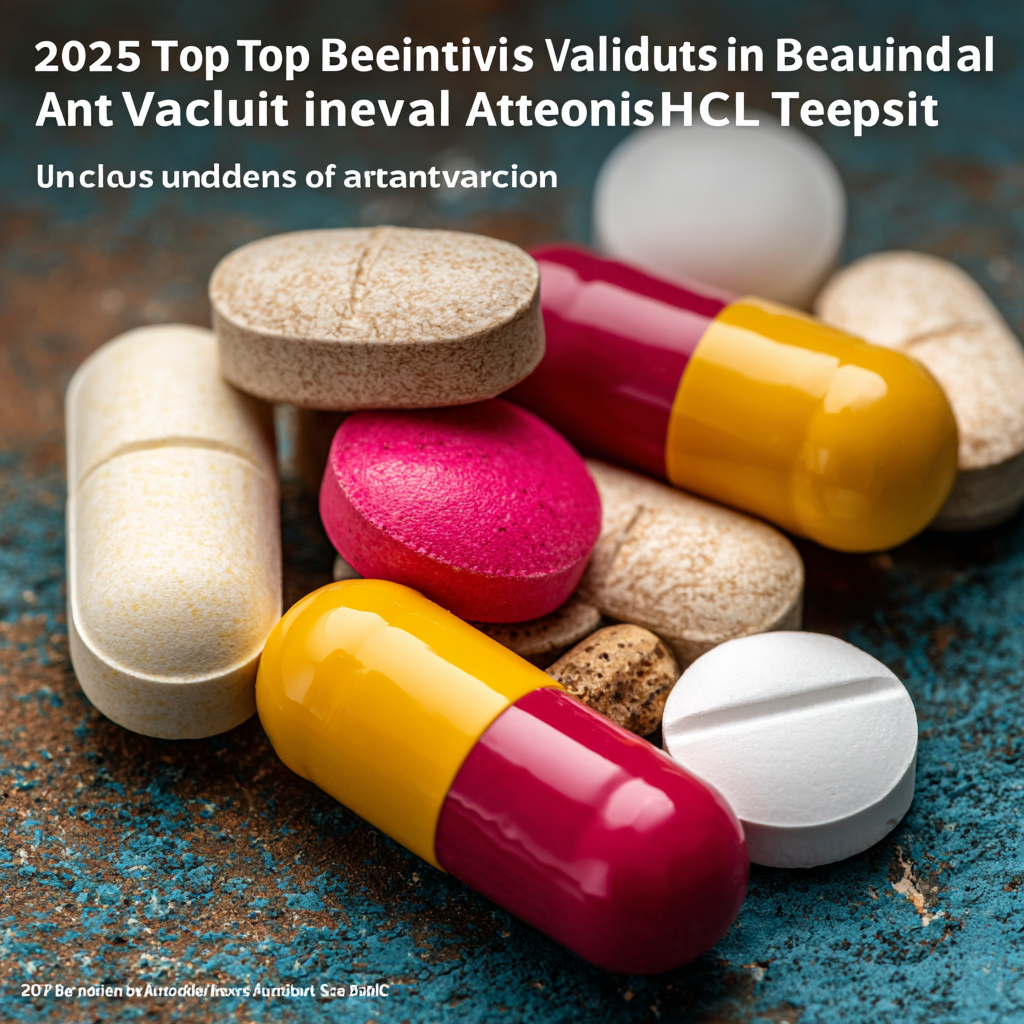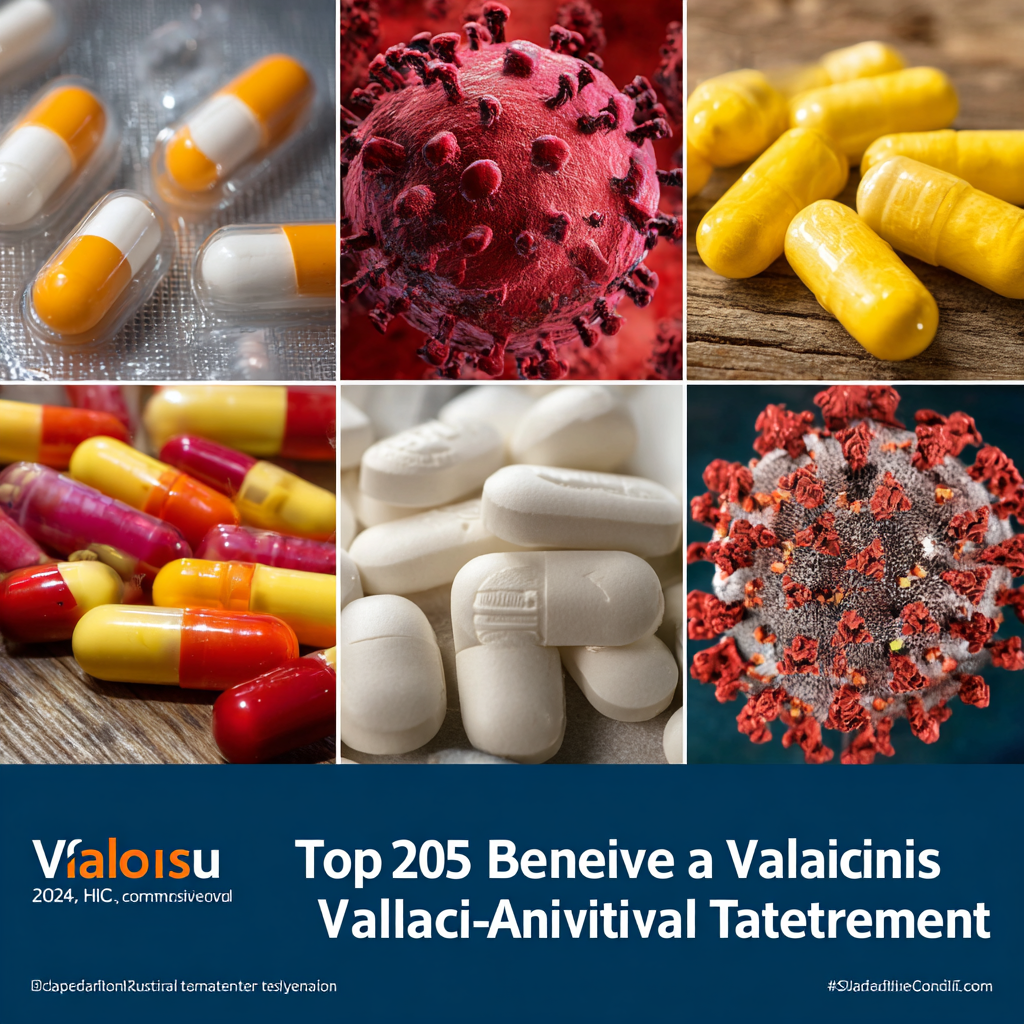
News
2025 Top 5 Benefits and Uses of Valaciclovir Hcl in Antiviral Treatment
In recent years, the demand for effective antiviral treatments has surged, particularly in light of the increasing prevalence of viral infections such as herpes simplex and varicella-zoster virus. One medication that has garnered significant attention in the field of antiviral therapy is Valaciclovir Hcl. According to a report by the Global Antiviral Drugs Market, the market is expected to reach USD 72.7 billion by 2025, highlighting the essential role of antiviral medications like Valaciclovir Hcl in therapeutic regimes. This medication is known for its ability to treat and manage infections more effectively, underscoring its importance among healthcare providers.
Valaciclovir Hcl functions by converting into acyclovir in the body, providing a potent inhibitor of viral DNA synthesis, which is crucial for halting the progression of viral infections. A clinical study published in the Journal of Antimicrobial Chemotherapy found that Valaciclovir Hcl not only significantly reduces the duration and severity of herpes outbreaks but also minimizes the risk of transmission. As we approach 2025, understanding the benefits and applications of Valaciclovir Hcl will be vital for healthcare professionals aiming to optimize patient outcomes and advance antiviral treatment strategies. This article delves into the top five benefits and uses of Valaciclovir Hcl, emphasizing its transformative impact on antiviral therapy.

Understanding Valaciclovir Hcl: Mechanism of Action in Viral Infections
Valaciclovir Hcl, an antiviral medication, primarily targets viral infections caused by herpes simplex virus (HSV) and varicella-zoster virus (VZV). Its mechanism of action revolves around its conversion into acyclovir, an active antiviral compound. Once ingested, valaciclovir is rapidly absorbed and metabolized in the liver and other tissues, where it transforms into acyclovir through enzymatic processes. This conversion is crucial because acyclovir selectively inhibits viral DNA polymerase, an essential enzyme for viral replication.
By preventing the synthesis of viral DNA, valaciclovir effectively curtails the proliferation of the virus within the host. This action not only alleviates symptoms associated with herpes infections but also reduces the duration and severity of outbreaks. The drug possesses a higher oral bioavailability compared to acyclovir, leading to improved therapeutic outcomes. Moreover, valaciclovir's ability to be administered less frequently enhances patient compliance, making it an important player in managing chronic viral conditions in clinical settings.
Top Advantages of Valaciclovir Hcl in Antiviral Therapy
Valaciclovir HCl, a prodrug of acyclovir, has emerged as a pivotal component in antiviral therapy, particularly for treating herpes simplex and varicella-zoster viruses. One of its key advantages is its enhanced bioavailability, which is reported to be around 54% compared to the 10-20% of acyclovir. This means patients can achieve effective therapeutic levels with lower doses, making treatment more manageable and less burdensome. According to a report by the Global Antiviral Drugs Market, the demand for effective antiviral agents like Valaciclovir is projected to grow, underscoring its importance in contemporary medicine.

Another significant benefit is its reduced dosing frequency, often allowing for just once or twice daily administration. This adherence-friendly regimen is particularly beneficial for chronic conditions like genital herpes, where maintaining consistent medication intake is crucial for preventing outbreaks. A study published in the Journal of Infectious Diseases highlights that patients using Valaciclovir exhibited lower recurrence rates of herpes simplex infections compared to those on other antiviral therapies. These factors collectively enhance patient compliance and improve overall treatment outcomes, reinforcing Valaciclovir HCl's position as a cornerstone in antiviral treatments.
Common Clinical Uses of Valaciclovir Hcl: From Herpes to Cytomegalovirus
Valaciclovir HCl, an antiviral medication, is widely recognized for its efficacy in treating various viral infections, particularly herpes simplex viruses (HSV) and cytomegalovirus (CMV). Clinical studies have shown that Valaciclovir reduces the frequency and severity of HSV outbreaks while improving patient quality of life. According to a report by the American Journal of Medicine, patients using Valaciclovir experienced a 75% reduction in lesions and symptoms during recurrent infections, highlighting its role as a cornerstone in managing genital herpes.

Beyond its effectiveness against HSV, Valaciclovir has also proven invaluable in the management of CMV infections, especially in immunocompromised individuals. A recent study in the Journal of Clinical Virology revealed that Valaciclovir significantly decreased the incidence of CMV disease among kidney transplant recipients, with a protective effect seen in over 50% of patients treated with the medication. These findings underscore the drug's versatility in treating viral pathogens and its importance in preventing serious complications related to viral reactivation in at-risk populations.
Dosage Guidelines and Administration Tips for Optimal Efficacy
When prescribing Valaciclovir HCl for antiviral treatment, adhering to dosage guidelines is crucial for achieving optimal efficacy. The standard dosage generally depends on the condition being treated; for instance, in the case of herpes simplex virus infections, an adult might be prescribed 1,000 mg to be taken two to three times daily. For patients with renal impairment, dosage adjustments are necessary to avoid potential toxicity. It is essential for healthcare professionals to evaluate renal function prior to initiating treatment to ensure safety and effectiveness.
Administration tips can significantly enhance the overall therapeutic outcome. Valaciclovir can be taken with or without food, which offers flexibility in patient adherence. However, it is important for patients to maintain hydration, particularly when treating conditions that may cause dehydration, to minimize renal strain. Additionally, ensuring patients understand the importance of completing the full course of treatment—even if symptoms improve—will help in preventing resistance and recurrence of the infection. Regular follow-ups and monitoring should also be encouraged to assess the treatment response and make any necessary adjustments.
2025 Top 5 Benefits and Uses of Valaciclovir Hcl in Antiviral Treatment
| Benefit/Use | Description | Recommended Dosage | Administration Tips |
|---|---|---|---|
| Herpes Simplex Virus Management | Effective in treating and preventing outbreaks of genital herpes. | 500 mg twice daily | Take with or without food; maintain hydration. |
| Varicella-Zoster Virus Treatment | Reduces the severity of shingles (herpes zoster). | 1000 mg three times daily | Start within 72 hours of rash onset; complete full course. |
| Post-Exposure Prophylaxis | Prevents herpes infection after exposure. | 500 mg daily for 7-10 days | Initiate as soon as possible after exposure. |
| Improvement in Quality of Life | Reduces the frequency of outbreaks, enhancing daily living. | 500 mg daily as suppressive therapy | Regular intake is crucial; consider a reminder system. |
| Safety in Immunocompromised Patients | Can be safely used for herpes treatment in at-risk populations. | 500 mg twice daily (adjust as needed) | Monitor renal function and adjust dosage accordingly. |
Potential Side Effects and Interactions: What Patients Need to Know
Valaciclovir HCl, a prodrug of acyclovir, is widely used in the treatment of various viral infections, particularly those caused by the herpes simplex virus and varicella zoster virus. Despite its clinical efficacy, patients should be well-informed about potential side effects and drug interactions before starting treatment. Clinical studies indicate that approximately 5-10% of patients may experience mild to moderate side effects, including nausea, headache, and dizziness. More severe, though rare effects such as renal impairment and neurotoxicity can occur, particularly in individuals with pre-existing kidney conditions or those on concomitant nephrotoxic medications.
Drug interactions are another important consideration. Valaciclovir is primarily metabolized by the liver, and caution must be exercised when it is used in combination with medications that affect liver enzymes. Reports suggest that co-administration with drugs such as probenecid or mycophenolate mofetil can increase valaciclovir concentrations, potentially heightening the risk of adverse effects. The American Society of Health-System Pharmacists highlights that healthcare providers should regularly review patients' medication regimens to mitigate these risks and ensure safe antiviral treatment. Therefore, it is essential for patients to communicate openly with their healthcare providers regarding all medications and supplements they are taking.
2025 Top 5 Benefits of Valaciclovir HCl in Antiviral Treatment
Related Posts
-

How to Use Valaciclovir Hcl Effectively for Managing Herpes Simplex Virus Infections
-

Comprehensive Strategies for Effective Use of Valaciclovir Hcl
-

Solutions for Enhancing Global Procurement of Best Valaciclovir Hcl with Unmatched Quality Assurance
-

Unmatched Quality and Excellence in Valaciclovir Hcl Manufacturing from China
-

Comprehensive Tutorial: Mastering Valaciclovir HCl Usage with Key Industry Insights and Data
-

5 Key Benefits of Valaciclovir HCl: Your Top Choice for Effective Treatment





